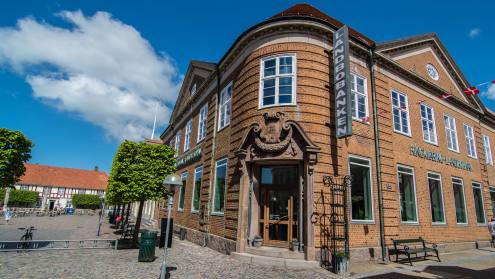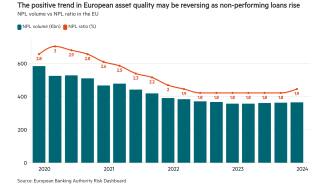While the French and Dutch electorates voted ‘No’ to the new European constitution, and the euro came under mounting pressure – with bets being taken on some countries leaving the single currency – Malta joined the Exchange Rate Mechanism of the EU in May. Membership of the euro in 2008 is the next objective.
Michael Bonello, governor of the Central Bank of Malta, outlined his country’s plans for further absorption into the EU at a recent seminar on Malta as a financial centre. Joining the euro and enhancing its position as a small, but vibrant, international financial services centre are central plans of this strategy.
“Like many other countries, Malta is currently seeking to reduce its internal and external deficits,” he told his audience at The Mansion House, the official residence of The Lord Mayor of London. Also, in common with other countries, we are seeking to reduce the role of the state, with a particular focus on reducing our large and expensive welfare state. Finally, we are putting all of this in the context of our efforts to become more fully integrated into the European Economic and Monetary Union.”
Growth strategy
Malta, which consists of three small islands south of Sicily, has a population of 400,000 and an annual GDP of £3bn. That gives it a GDP per capita of £7500 – about three-quarters of the EU average.
“Our economic growth strategy focuses on education and training, and increasing productivity levels in line with the objectives of the EU’s Lisbon Agenda, the Stability and Growth Pact,” he said. “The promotion of high value-added niche industries, including financial services, which accounts for 6% of our economy, is a main element of the strategy.”
Fertile ground
Foreign direct investment is the main driver of economic growth. It accounted for more than 15% of GDP in 2000, though this slipped to 8% in 2004. De La Rue, the UK bank note and security printer, has had a print works in Malta for more than 25 years.
That said, Malta, in line with most of the EU, has had years of slow economic growth, hovering around 1% since 2001, and is forecast to get no higher than 2% by 2007, according to central bank figures.
“In recent years, an interesting phenomenon has been the growth of the international banking sector,” said Mr Bonello. Financial sector growth is supported by “a favourable operating environment” – meaning that taxation is not too high, it has a well-qualified and multi-lingual workforce, major international accountancy and IT firms are present, and office and living accommodation is cheap.
Retail and corporate banking are dominated by two institutions: Bank of Valletta (quoted on the local stock exchange but with the government and Banco di Sicilia being significant shareholders) has around 43% market share, and HSBC Malta about 47%.
There are also a number of small Maltese-owned and foreign-owned banks operating in market niches. One of these is First International Merchant Bank (FIMBank), a trade finance specialist set up 10 years ago and owned primarily by Kuwaiti and north African interests. It is a prime example of a bank utilising Malta’s historical, cultural and geographical position as a stepping stone between north Africa and Europe.
Two years ago, FIMBank bought London Forfaiting Company, which still operates out of the UK, for £31m, giving it an even broader international outlook. It now has 80 staff in Malta, 40 staff overseas and assets of $216m. Last year it had an operating income of $12.3m and made a $1.5m profit after tax.
Show of confidence
In June, FIMBank raised a $30m syndicated trade finance loan in its first appearance on the Euroloan market. It was 100% over-subscribed from an initial launch of $15m. The syndicate consists of 15 lenders from 12 countries and the money will be used to support the bank’s global trade finance activities.
Margrith Lutschg-Emmenegger, the bank’s president, said the over-subscription showed the confidence that the international banking community has in FIMBank and Malta.
A few days after that deal, the bank signed a $10m subordinated convertible loan agreement with the International Finance Corporation (IFC) part of the World Bank. The IFC investment was contingent on several conditions, including Malta becoming an IFC member.
The loan will be used to finance the expansion of FIMBank’s trade finance operations in IFC member countries, including China, Argentina, Brazil, Russia and the UAE.











